They were but names on a map until trans-border skirmishes made them well-known. The forgotten areas of Gilgit and Baltistan are given a closer look in this story, hitherto unpublished, by the celebrated late defense correspondent Sati Sahni
Gilgit and Baltistan are the unfortunate parts of Jammu & Kashmir which are neither “owned” by India nor by Pakistan. Even then Pakistan insists on calling it the Northern Area of Pakistan. In the past 57 years, India has asserted its claim rather feebly and occasionally. Pakistan, on the other hand, took over the administration of the vast areas, exploited its resources and used it to win over the friendship of China – but did not give the region and its people their due. Not many Indians are aware that this vast region is 72,945 sq km, which is five times the area administered by the POK government.
The Gilgit Baltistan region was a part of the princely state of Jammu and Kashmir from 1846 to 1947 ruled by the Dogra rulers when it was annexed by Pakistan during the Pakistani Qabbali invasion of J&K shortly after partition.
The territory of present-day Gilgit-Baltistan became a separate administrative unit of Pakistan in 1970 under the name “Northern Areas”. This special administrative unit was formed by the amalgamation of the former Gilgit Agency, the Baltistan district and several small former princely states including the Hunza and Nagar.
In the 19th century by using their military might and diplomatic skills, the Dogra rulers of Jammu & Kashmir State were able to subjugate and subdue the rulers of various principalities of the Gilgit region like Hunza, Nagar, Punial, Yasin, Ghizr, Ishkoman and Chilas, and Khaplu, Rondu, and Skardu in Baltistan. Even when the Dogra General Zorawar Singh conquered Baltistan in 1840, Gilgit retained its independence. However, in 1846 succession to the rulership of Gilgit was contested. A contender, Karim Khan, sought assistance from the Governor of Kashmir (Lahore’s Sikh Durbar), who dispatched an Expeditionary Force which quelled the warring factions and got Karim Khan enthroned. He was however asked to rule in the name of the Sikh Durbar and accept the Lahore Maharaja as suzerain.
The military conquest of the area received legal and constitutional validity through the Treaty of Lahore (1846) Clause 4 between East India Company and the Sikh Durbar. This was ratified by the Treaty of Amritsar of 1846 between the British and Maharaja Gulab Singh. The expansionist intentions of Czarist Russia towards the south and the British Government’s realization that they should not have handed over Gilgit and Baltistan to the Kashmir Maharaja, made it change its policy towards this vital region. Suddenly the strategic importance of this region dawned upon the Indian establishment.
Looking for a foothold
 From 1852 to 1853 the British Government looked out for an opportunity to get a foothold in this strategic region to safeguard its imperial interests. Soon after, there was an uprising in Gilgit. Maharaja Ranbir Singh, who had succeeded Gulab Singh, dispatched a large expeditionary force in 1858 which dealt with the uprising to bring peace in the region and establish order among rival principalities. In the meantime, the British Government was keen to increase its influence in the area. However, the Viceroy in India, Lord Canning, was able to persuade Whitehall to desist undermining the authority of Kashmir Maharajas because of the valuable assistance he had rendered in overcoming the 1857 Mutiny.
From 1852 to 1853 the British Government looked out for an opportunity to get a foothold in this strategic region to safeguard its imperial interests. Soon after, there was an uprising in Gilgit. Maharaja Ranbir Singh, who had succeeded Gulab Singh, dispatched a large expeditionary force in 1858 which dealt with the uprising to bring peace in the region and establish order among rival principalities. In the meantime, the British Government was keen to increase its influence in the area. However, the Viceroy in India, Lord Canning, was able to persuade Whitehall to desist undermining the authority of Kashmir Maharajas because of the valuable assistance he had rendered in overcoming the 1857 Mutiny.
For some years the status lasted but London was adamant and finally, the British Government had their way. In 1877 the Gilgit Agency was set up and Major Biddulph was selected to head it. Sometime later in 1881 when the British managed to get a foothold at Jalalabad in Afghanistan, the Agent in Gilgit was withdrawn. Because of increased military activity by Czarist Russia and increasing Afghan interference in the Chitral area, the British reposted another agent at Gilgit in 1889. Within one year of his posting, the redoubtable Colonel Durrand successfully brought Hunza and Nagar under his control. Durrand built up a direct relationship with the local rulers and to that extent cut down the Maharaja’s authority.
Divested of powers
Under a diabolical plan, Ranbir Singh’s successor Maharaja Pratap Singh was divested of many powers which helped to overcome all resistance against British efforts on the Gilgit front. In 1900, all military administration in Gilgit, Hunza, Nagar, and Chitral was brought under British control, though the sovereignty of the Kashmir Maharaja was not questioned. The Chieftains continued to pay annual tributes to the Kashmiri Maharaja.
In the meantime, the British helped build proper roads from Rawalpindi to Srinagar through Jhelum Valley. This was later extended to Gilgit (from Bandipore a 10-foot-wide road was completed in 1893). In 1881 a telegraph line was constructed to connect Dras with Skardu and telegraph offices were opened there. In 1885 the Sonmarg to Dras 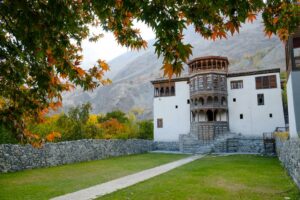 telegraph line was laid.
telegraph line was laid.
The undercurrent of adverbial relations between Pratap Singh and the British Indian Government resulted in the installation of a British resident at Srinagar. The Gilgit Political Agent was subordinate to him. Though the Maharaja was not dethroned, real power vested with the Resident from 1889 to 1921. But at no stage was the Gilgit and Baltistan region taken out of the domain of the Kashmir Maharaja.
The Gilgit Manuscripts
Gilgit has been from time immemorial, a part of the Indian sub-continent. It has been within the ambit of its political, religious and cultural influences. This was established beyond doubt by the discovery in 1938 of what has become known as the Gilgit Manuscripts. This is an authentic record of strong Buddhist influences in the region from prehistoric times. Recent work by German explorers and archeologists in collaboration with the Pakistan Government has led to the discovery of numerous rock engravings and images of Buddha, Bodhisattvas and stupas from areas spanning Chitral, Chilas and Gilgit right up to Skardu. Gilgit has been part of Kashmir State from early times. It formed part of the empires of eighth-century Kashmir King Lalitaditya Muktapidda and in the 14th century that of Sultan Shabuddin.
In the 19th century, the Sikh rulers of Kashmir had sway over the Gilgit area while Baltistan was incorporated in Jammu ruler’s territory by General Zorawar Singh. However, from 1846, all territories of Gilgit and Baltistan became part of Jammu & Kashmir State.
From the early 20th century, the British progressively increased pressure on the Kashmir Durbar to hand over the strategic territory of Gilgit Agency, as the British felt an increasing threat from Czarist Russia which mounted further with the Bolshevik Revolution had succeeded.

Maharaja Pratap Singh, thought beholden to the British for the restoration of his full powers in 1922, was able to ward off the final decision. When Maharaja Hari Singh succeeded him in 1925, the British again mounted pressure on him. His Government’s efforts to deal with the serious situation in 1931 and the use of force resulted in the death of 21 people. This provided the British Viceroy to send handpicked Britons to Kashmir. The first to come was Bertrand Glancy at the head of a Commission to inquire into grievances of Moslems against the Maharaja’s Government. Then Mr. Wakefield was sent as Minister-in-Waiting and later came Col. Calvin as “Prime Minister”. With these three key officials putting administrative pressure on Maharaja Hari Singh and Sheikh Abdullah’s Moslem Conference working on the political front, the Maharaja was squarely cornered. Finally, he was forced to “agree” to give Gilgit Agency on a long lease to the British Indian Government. On March 26, 1935, by an Agreement between Maharaja Hari Singh and Lt. Col. Edward Lang, Resident in Kashmir on behalf of Viceroy and Governor-General, Lord Willingdon, Gilgit territory north of the Indus river was leased out to the British for 60 years. The Agreement, however, clearly laid down that the leased territory “shall continue to be included in the dominions of His Highness, the Maharaja of Jammu & Kashmir”. In the territory, the Maharaja’s flag continued to fly. Baltistan and Astore continued to be under Maharaja’s control as hitherto.
Changing the situation
The British, keeping an eye on how the changing situation due to World War II and the Soviet Union becoming a world power planned the future of Gilgit keeping in mind its very strategic location.
Realizing the inevitable – that the British will have to give up the Indian sub-continent – plans were started early for keeping Gilgit region out of Indian control, during the lease period. Road connectivity was upgraded, two airstrips were improved and the telecommunication network enlarged. A small force of Gilgit Scouts, consisting of a handful of people of Gilgit, Hunza, Nagar and some Baltis, was formed ostensibly for “internal security”. The Scouts were trained and officered by British officers. They were trained to be loyal to the British and to secure their imperial interests. Before India and Pakistan became independent Dominions, the Gilgit lease was terminated and 1300 sq. mile territory was handed back to the Kashmir Durbar on August 1, 1947. The British deliberately did not either disband the Gilgit Scouts or pull out the British officers – Major William Alexander Brown and Capt. A.S. Matheisan. The Governor appointed by the Maharaja to administer the Gilgit Agency was a Dogra – Brigadier Ghansara Singh. He had 600 strong scouts and 6th Battalion J&K Rifles (less 2 companies). The Commander was Lt. Col. Abdul Wajid Khan. Information given by Major General Scott, Chief of Staff of J&K State Forces, on return from Gilgit on July 30, 1947, was that the two British officers of the Gilgit Scouts – Brown and Matheisan – had already opted for service in the Pakistan Army. The officers delayed their repatriation – maybe intentionally. The British officers were able to subvert the loyalties of the Moslem Company of the J&K Rifles.
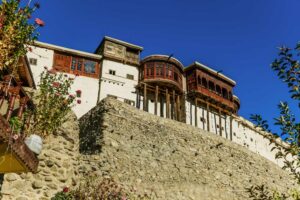 On the night of October 31, 1947, the Ops Datta Khel was executed with remarkably well-planned action. Brig. Ghansara Singh and his staff were besieged in his residence and then arrested under orders of Major Brown. On November 3, 1947, in the Gilgit Scouts Lines, Major Brown hoisted the Pakistani flag. Soon after, he sent a message to the chief minister of Pakistan’s NWF Province and also to Roger Bacon the British political Agent at Khyber, requesting for the appointment of a Pakistan Officer to take charge at Gilgit. Getting no response for some days, he got desperate and sent an SOS to Peshawar on November 13 to send a senior Pakistani officer to take over “or Gilgit will slip out of our hands”.
On the night of October 31, 1947, the Ops Datta Khel was executed with remarkably well-planned action. Brig. Ghansara Singh and his staff were besieged in his residence and then arrested under orders of Major Brown. On November 3, 1947, in the Gilgit Scouts Lines, Major Brown hoisted the Pakistani flag. Soon after, he sent a message to the chief minister of Pakistan’s NWF Province and also to Roger Bacon the British political Agent at Khyber, requesting for the appointment of a Pakistan Officer to take charge at Gilgit. Getting no response for some days, he got desperate and sent an SOS to Peshawar on November 13 to send a senior Pakistani officer to take over “or Gilgit will slip out of our hands”.
The Pakistan Government appointed Khan Sahib Mohammed Alam of Provincial Civil Service of NWFP, as Political Agent at Gilgit. He landed at Gilgit airstrip on November 16th, 1947 and immediately took over charge from Major Brown. Regular daily air service between Peshawar and Gilgit brought a steady stream of Pakistani civil and military officers who sidelined the local leaders who had helped take over by Gilgit Scouts. This consolidation helped form a firm basis for Pakistani thrust a few weeks later towards Skardu, Gurais, Till Valley, Kargil, Zoji La and up the Indus Valley towards Leh.
The Indian Army’s historic resistance at Skardu, a well-planned operation to liberate Gurez and Till Valley, the epoch-making tank breakthrough of Zoji-La [see Seniors Today, September issue], daring landing of aircraft at Leh makeshift airstrip and rollback of Pakistani forces from large and strategic areas of Ladakh frustrated Pakistani plans to occupy vast areas of Jammu & Kashmir. When the Ceasefire was enforced on January 1, 1948, it left the whole of Gilgit Agency and vast tracts of Baltistan under Pakistani occupation.
Vague replies
In the deliberations of UNCIP, whenever the Indian side raised the question of these areas, the UN Commission gave vague replies and postponed their consideration on some account or the other.
The all-important UNCIP Resolution of August 13, 1948, which proposed the withdrawal of all Pakistani Army troops and irregular armed forces from occupied territories, failed to even make a mention of these areas. It revealed the real intent of the Western powers.
The Indian Government was understandably upset. Prime Minister Jawaharlal Nehru on August 20, 1948, wrote a detailed letter to UNCIP Chairman, seeking explanation ‘for the absence of any mention about the problem of administration of defense of the large area in the north”. This letter also said that “after Pakistani troops and irregulars have withdrawn from the territory, the responsibility for the administration of the evacuated areas should revert to the Government of Jammu & Kashmir and for the defense to us…..”.
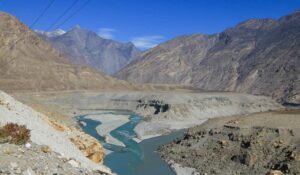 On August 25, 1948, the Chairman of the UNCIP, Dr. Josef Korbel wrote back to say, “The Commission wishes me to confirm that, due to peculiar conditions of this area, it did not specifically deal with the military aspect of the problem in its resolution of August 13, 1948. It believes, however, that the question raised in your letter could be considered in the implementation of the Resolution”. The Czech member of UNCIP, Dr. Chyle, in his minority report to the Security Council pointedly said, “The situation in the northern areas has meanwhile undergone a material change in that the Pakistan Army conquered many strategically important places during the interval. The Commission is bound to admit that while the reservation of the Government of India of August 20, 1948, maybe legally valid, it is physically impossible to implement it.”
On August 25, 1948, the Chairman of the UNCIP, Dr. Josef Korbel wrote back to say, “The Commission wishes me to confirm that, due to peculiar conditions of this area, it did not specifically deal with the military aspect of the problem in its resolution of August 13, 1948. It believes, however, that the question raised in your letter could be considered in the implementation of the Resolution”. The Czech member of UNCIP, Dr. Chyle, in his minority report to the Security Council pointedly said, “The situation in the northern areas has meanwhile undergone a material change in that the Pakistan Army conquered many strategically important places during the interval. The Commission is bound to admit that while the reservation of the Government of India of August 20, 1948, maybe legally valid, it is physically impossible to implement it.”
The main report of UNCIP to the Security Council did elaborate on the problem of the northern areas. The observation made by the UK Representative on UNCIP is very pertinent. He said “In regard to the northern areas (i.e. Gilgit and Skardu) my government is impressed by the view given on paper 273 of the Commission’s report that the entry of Indian forces into the areas north of the ceasefire line would almost inevitably lead to renewal of hostilities …. it will be remembered that all the members of the Commission except one (i.e. Czechoslovakia) felt that the Government of India ought, in these circumstances, to be willing to waive their claim, which has, in any event, to be considered afresh.”
The ‘Karachi Agreement’
Since the matter of illegal occupation of vast Indian territory in Jammu & Kashmir was under discussion in the UN Security Council and the Ceasefire Line was to be demarcated on the ground, Pakistan Government was unsure of the status of the Gilgit and Baltistan areas. It devised an unusual political deal. It forced its puppet “Azad Kashmir” Government to sign an Agreement to “hand over” this region to it. This is known as the Karachi Agreement and was signed on April 29, 1949. Federal Government of Pakistan was represented by Mushtaq Ahmed Gurmani, its Minister without Portfolio. Sardar Mohammed Ibrahim Khan, President of “Azad Kashmir” Government signed for the unknown and unrecognized set-up. Surprisingly another signatory was President of All J&K Moslem Conference, Chaudhury Ghulam Abbas.
Through this Agreement, matters handed over to Pakistan were:
- Defense (complete control over AK Forces)
- The foreign policy of Azad Kashmir
- Negotiations with UNCIP
- Publicity in foreign countries and Pakistan
- Coordination of arrangements of relief and rehabilitation of refugees,
- Coordination of publicity in connection with Plebiscites
- All activities within Pakistan
- All affairs of Gilgit, Ladakh under control of Political Agent.
It is pertinent to point out that Pakistan did not consider Gilgit and Baltistan as part of Pakistan or even so-called “Azad Kashmir”. Why did the Pakistan Government have to make it a tripartite agreement with somebody from a political outfit signing it? It has been claimed by Balti nationalists that Sardar Ibrahim Khan has neither confirmed nor denied that he ever signed such a document. Even the Pakistan Government has been unable to produce the original Agreement. Doubts are persisting that if ever such a document was signed at all, or even drawn up. The Balti nationalists have also questioned the right of the J&K Moslem Conference to “gift” something which is never “owned”. How can one delegate a right or power, one does not have?
Pakistan has taken different and sometimes contradictory stands regarding the status of this region. Before the UNCIP it accepted the position that it was part of Jammu & Kashmir and that it would be subjected to the proposed plebiscite. By the Sino-Pakistan Frontier Agreement of 1963, Pakistan ceded to China 5180 sq. km. of Indian territory. Later, to further strengthen Sino-Pak friendship and to enable China to reach the Indian Ocean, Karakoram Highway was built. This 900 km long highway cost a billion dollars and resulted in the loss of over 700 lives. India strongly protested against the ceding of Indian territory to China and later when the highway was constructed through Indian territory. Both protests were rejected by Pakistan. In September 1974 when Pakistan Government merged Hunza principality into the Northern Area of Pakistan, India denounced Pakistani action. Pakistan rejected this also. In July 2006 the Governments of China and Pakistan decided to further improve and upgrade the Highway into a Super-Highway. This was with intention of China wanting to use Gwadar Port on the Makran Coast for increased international trade as well as to get a closer route for the middle eastern oil.
In the AJK Interim Constitution promulgated in 1974 there was nothing to show that the Northern Areas were under the administrative control of AJK Government. They were administered directly by the Pakistan Federal Government under Frontier Crime Regulations till 1973. It was neither a State nor a Province.
“Azad Jammu & Kashmir” High Court had declared in 1993 that the Northern Areas comprising of Gilgit, Baltistan, etc, were legally part of the State of Jammu & Kashmir, which is one entity. It further asked that these areas should come under the control of the AJK Government. The Court also said that the Karachi Agreement was by implication repealed by enforcement of Government Act of 1970. In May 1999, Pakistan Supreme Court declared that residents of the Northern Areas were citizens of Pakistan. It is still known as FANA – Federally Administered Northern Areas.
During the period of its illegal occupation of Pakistan, the resident of Northern Areas was denied Fundamental Rights. They had no representation in any legislative setup including the National Assembly. There was not much development in social sectors either. Pakistan, however, built the Karakoram Highway and network of strategic roads, airports, and helipads to upgrade its defense infrastructure. On lines of Gilgit Scouts, Chitral Scouts, Karakoram Scouts, Northern Scouts, and Khyber Rifles were raised. In the early 1970s, all these paramilitary forces were absorbed in the Pakistan Army and formed as a separate regiment with the Regimental Centre at Bunji. This Regiment was given the name of Northern Light Infantry. During the Kargil War of 1999 heavy causalities of over 2700 of its personnel resulted in large scale anger against Pakistan Government. People of the Northern Areas staged anti-Government agitation till the Federal Government agreed to consider them at par with the rest of the personnel of the Pakistan Army.
Growing movement
All through these five decades and more, a movement for democratic rights, equity, representative government, and economic development had been building. Since the 1950s all branches of political parties operating in POK were closed in the Northern Areas. The name of Pakistan Federal Ministry of Kashmir Affairs was changed into the Federal Ministry of Kashmir Affairs and Northern Areas. To start with the territory was put under control and was administered by the Political Agent. Later he was designated as Resident Agent. And still, later, it was changed to Resident Commissioner. Finally, it was decided by the Pakistan Federal Government to change it to the Administrator.
Since the early 1970s, the Pakistan Federal Government has tried to suppress people’s movement for fundamental rights on one hand and demand democratic institutions on the other. A majority of its population of over 19 lakh profess the Shia faith. The Federal Government is unhappy with the majority sect has made subtle and not-so-subtle efforts to reduce them into a minority by allowing Sunnis from the Army and other provinces to be settled in the Northern Areas. To change the demography of the region as a matter of policy, the Administration has encouraged Pashtuns to settle there. According to Balti nationalists, over one lakh have already been settled. This is the only area out of the occupied territories by Pakistan where restrictions on outsiders purchasing landed property or securing a government job have been removed. In 1947-48 the Shia population in this region was nearly 90%; it is now reduced to a little under 55%.
Dissidents within the Northern Areas and Opposition in POK have alleged frequently that the Administration has instigated Shia-Sunni riots whenever the opposition has raised its head. There were riots earlier in 1989-90 but they did not get publicity. Since the Kargil war of 1999, these have been noticed even outside Pakistan because opposition groups in POK and Northern Areas have become more bold and articulate.
The latest issue that is agitating the local Dards, Baltis, and Hanzikuts, is one concerning the construction of a series of five big dams on River Indus. All these dams are clubbed under the common name of Basha Dam. And Basha is a village that is part of the Pakistani province of NWFP – not of Northern Areas. The dams were planned some 15 years ago. The then PM of POK, Sardar Abdul Gayoom Khan had demanded in May 1993 that waters of rivers of Northern Areas which will be impounded in these dams are a natural property of POK, royalty should be paid for it. To get around this problem, the Pakistan Government toyed with the idea of incorporating this region with the NWFP. This plan had to be given up because of the order of its own Supreme Court which declared Northern Areas to be part of Jammu & Kashmir occupied with the opposition of its people.
The local population has alleged that they were not consulted before the National Assembly Committee finally recommended that in Diamer District of the Northern Areas, the main dam, 290 m high, be constructed since stiff opposition from NWFP, Baluchistan, and Sindh had forced the Federal Government to abandon the proposed Kalabagh Dam. The Northen Areas opposition had stated that construction of these dams would submerge over 27000 acres of land, obliterate 32 villages and displace over 30,000 persons. Gone forever would be the bustling city of Skardu and the ancient town of Chilas. Perhaps Pakistan also wants to wipe out traces of the Hindu and Buddhist heritage of the area, including chortans and stupas in ruin, engravings on rocks of Buddha, Bodhisattvas and many symbols of Buddhist faith and Hindu rituals.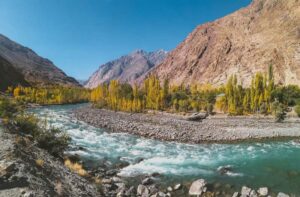
Objection to the dam
A week before the foundation of the dam was laid by Gen Musharraf in April 2006, the Indian Government objected to its construction on territory which was legally and constitutionally part of Jammu & Kashmir State before Pakistan forcibly occupied it. Earlier in 1974, Syed Mir Qasim, Chief Minister of Jammu & Kashmir had made a detailed “statement of facts” on Gilgit and Baltistan in J&K Legislative Assembly on 28th September demolishing Pakistan claim. On September 25, 1974, the Indian Government denounced the merger of Principality of Humza into the “Northern Areas of Pakistan”, which Prime Minister Z.A. Bhutto had made a day earlier in Pakistan National Assembly. In 1969 when Sino-Pak Karakoram Highway was thrown open for traffic, India had lodged its formal protest, which Pakistan brushed aside.
Over the years the people of Gilgit and Baltistan had felt disowned and uncared for by people on this side of LOC. There had been murmurs inside the territory but its people in the rest of Pakistan and abroad used to articulate their disappointment and even anger at Kashmiris who had not bothered about them. Even before the Kargil misadventure, Gilgit Baltistan Peoples had sent an appeal to “our Kashmiri brethren” and to newspapers in Jammu & Kashmir. Many newspapers had published this appeal in Urdu in March 1998. As late as April 2006, the Hurriyat Conference seemed to have woken up to reality. On April 21, 2006, a newspaper report claimed that the APHC had asked Pakistan to desist from laying claim to Gilgit and Baltistan areas because APHC considers this claim “big roadblock in finding a solution of Kashmir issue”.
In 2009, Asif Ali Zardari signed a self-governance order and the area was granted limited autonomy and renamed Gilgit-Baltistan. However, the real power rests with the governor and not with the chief minister or elected assembly. Over the years the Pakistani government has rejected Gilgit-Baltistani calls for integration within Pakistan as the 5th. Province because it would jeopardize its demands for the whole Kashmir issue to be resolved according to UN resolution.
We, in India, claim that all areas of Jammu & Kashmir illegally and forcibly occupied by Pakistan are legally and constitutionally part of the Indian Union. Then it follows that residents of those areas are Indian citizens. It, therefore, becomes the responsibility of the Indian Government to protect their interests and to ensure that they enjoy all rights that are enjoyed by their compatriots living on this side of the Line of Control.



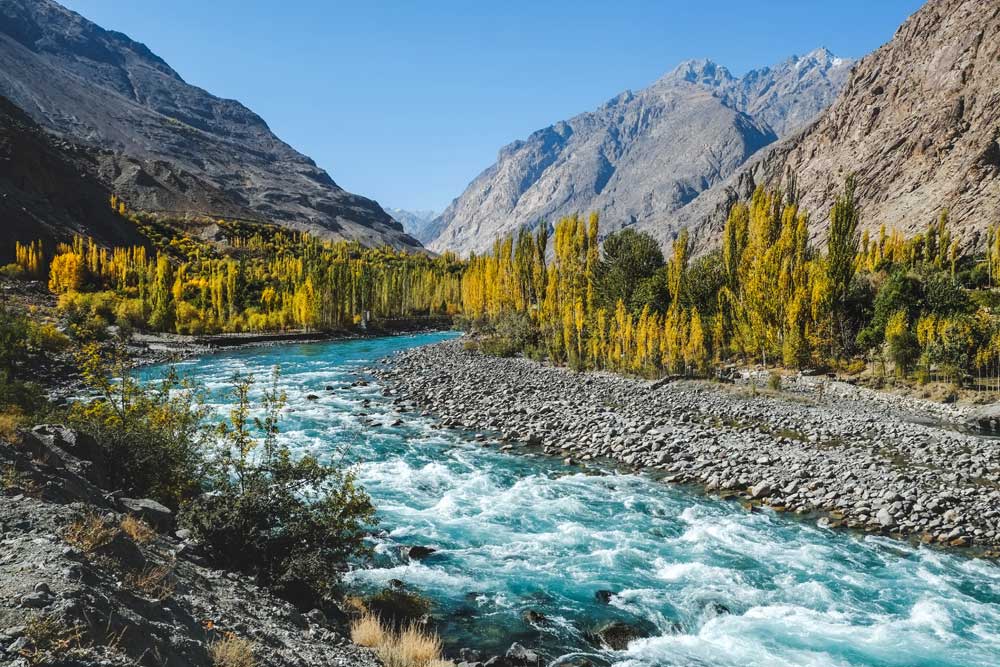





A very good and source full story. Five star.
It’s perfect and useful information